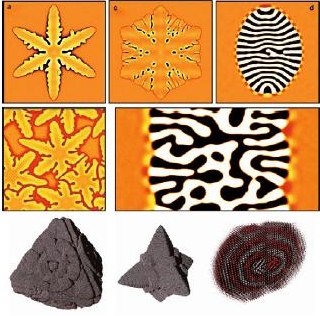
Heike Emmerich1, László Gránásy2,3, Hartmut Löwen4
1Lehrstuhl für Material- und Prozesssimulation, Universität Bayreuth, D-95440 Bayreuth, Germany
2Institute for Solid State Physics and Optics, Wigner Research Centre for Physics, P.O. Box 49, Budapest H-1525, Hungary
3BCAST, Brunel University, Uxbridge, Middlesex, UB8 3PH, United Kingdom
4Institut für Theoretische Physik II, Weiche Materie, Heinrich-Heine-Universität Düsseldorf, D-40225 Düsseldorf, Germany
In this contribution our focus is on the phase-field crystal method, which can be viewed as the youngest methodology in the field of interface computation based on recent work by Elder et al. (Phys. Rev. Lett. 88, 245701 (2002)). It bridges the gap between the molecular simulation approaches and the phase-field approach by operating on diffusive time scales yet atomic length scales. Here we review the fundaments of the phase-field crystal method as well as different models established so far with the aim to capture the main features of the wide range of phase diagrams found in materials science more and more comprehensively.


